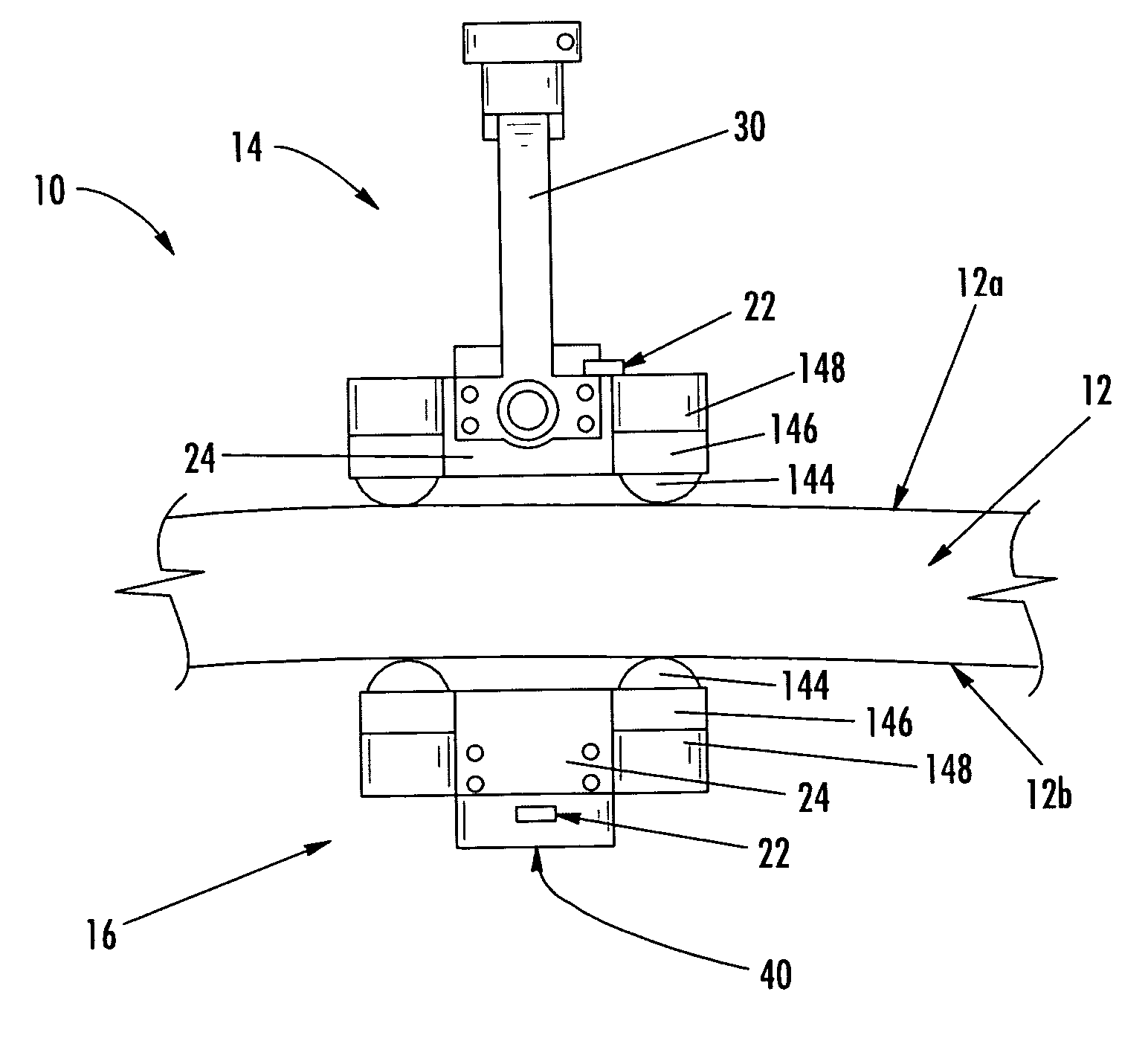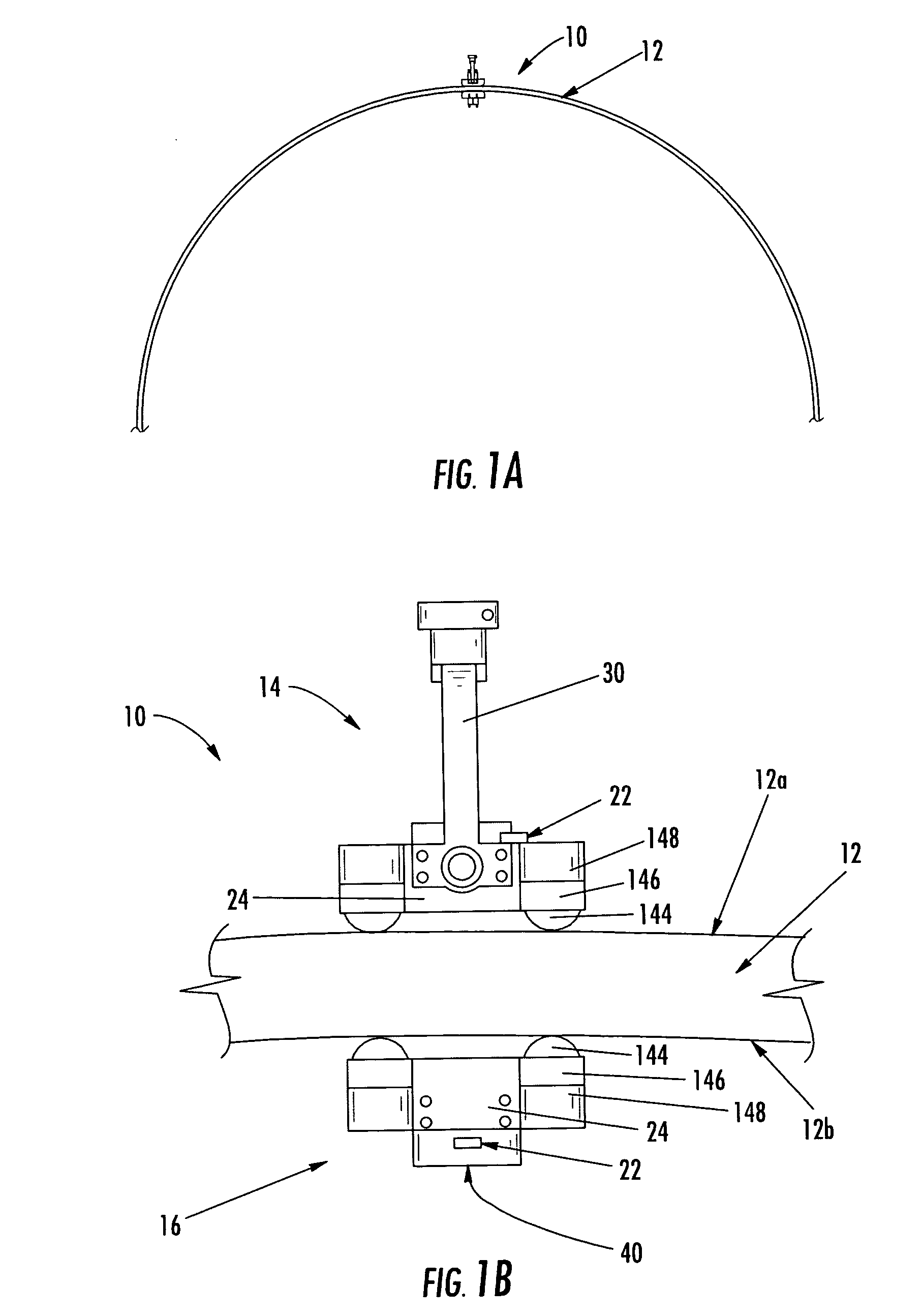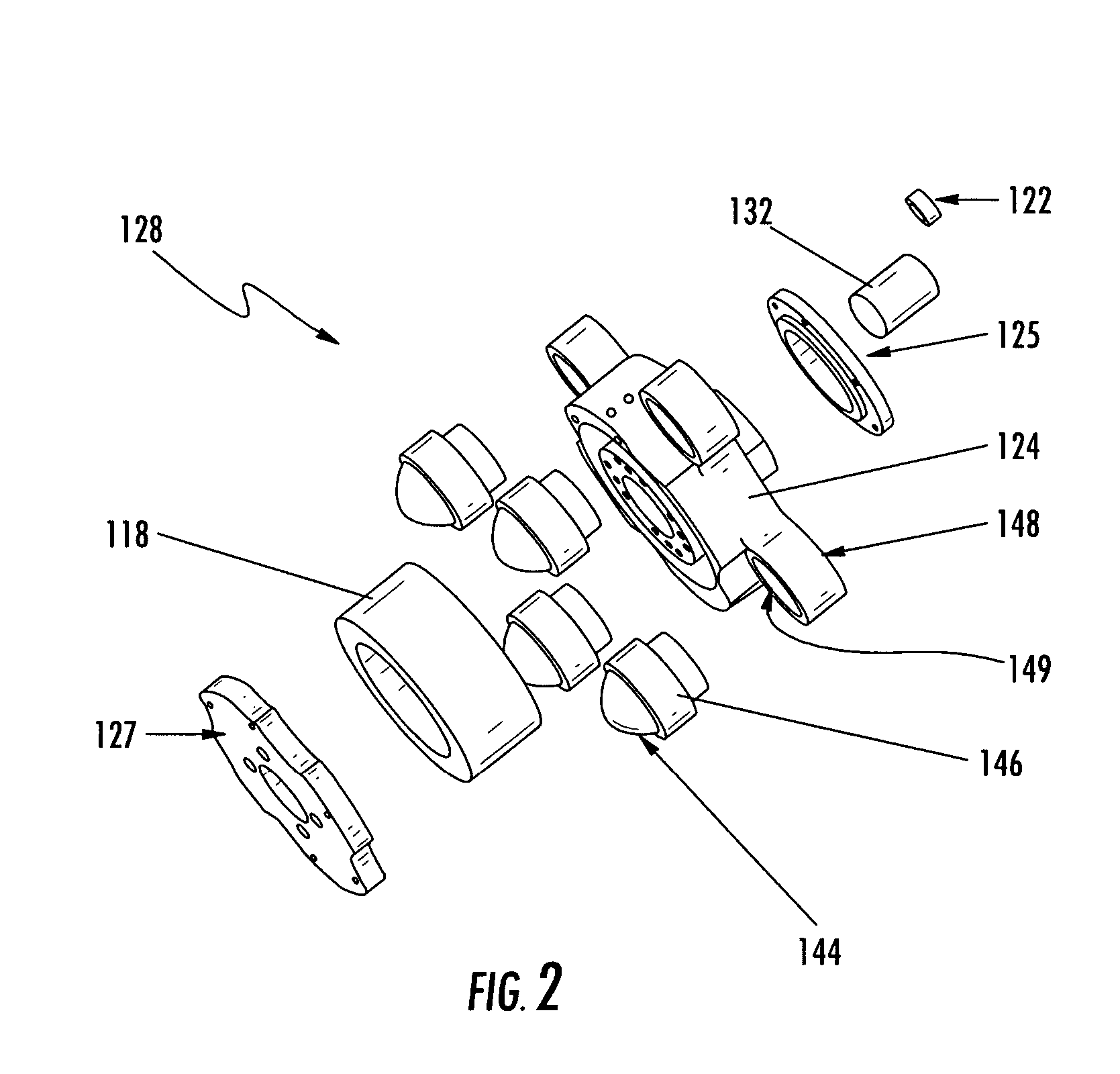Magnetically attracted inspecting apparatus and method using a ball bearing
- Summary
- Abstract
- Description
- Claims
- Application Information
AI Technical Summary
Benefits of technology
Problems solved by technology
Method used
Image
Examples
Embodiment Construction
[0031] The present invention will be described more fully with reference to the accompanying drawings. Some, but not all, embodiments of the invention are shown. The invention may be embodied in many different forms and should not be construed as limited to the embodiments described. Like numbers and variables refer to like elements and parameters throughout the drawings.
[0032] I. Ball Bearing Magnetically Coupled Inspection Probes
[0033] Referring now to FIGS. 1A and 1B, an apparatus 10 for inspecting a structure 12 according to one embodiment of the present invention is depicted. The apparatus can inspect a variety of structures formed of various materials. Since the apparatus relies to some extent upon the establishment of magnetic fields through the structure, however, the structure is preferably non-magnetic, that is, the structure preferably has no magnetic permeability. Structures that may be inspected with an embodiment of an inspection device of the present invention may i...
PUM
 Login to View More
Login to View More Abstract
Description
Claims
Application Information
 Login to View More
Login to View More - R&D
- Intellectual Property
- Life Sciences
- Materials
- Tech Scout
- Unparalleled Data Quality
- Higher Quality Content
- 60% Fewer Hallucinations
Browse by: Latest US Patents, China's latest patents, Technical Efficacy Thesaurus, Application Domain, Technology Topic, Popular Technical Reports.
© 2025 PatSnap. All rights reserved.Legal|Privacy policy|Modern Slavery Act Transparency Statement|Sitemap|About US| Contact US: help@patsnap.com



